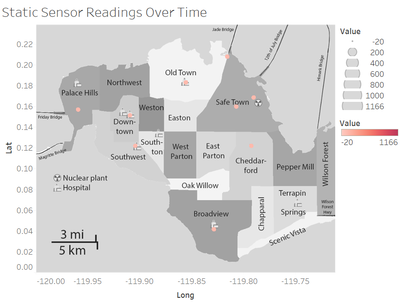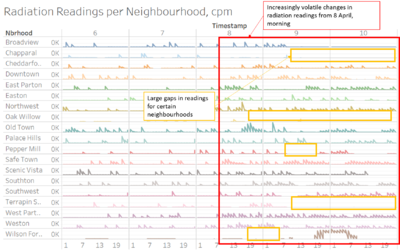Difference between revisions of "IS428 AY2019-20T1 Assign Lee Cheng Leng Task 4"
Jump to navigation
Jump to search
Cllee.2017 (talk | contribs) |
Cllee.2017 (talk | contribs) |
||
| (4 intermediate revisions by the same user not shown) | |||
| Line 49: | Line 49: | ||
! S/N !! Findings !! Visual Proof | ! S/N !! Findings !! Visual Proof | ||
|- | |- | ||
| − | | 1|| Static Network | + | | 1|| '''Static Network''' <br> |
Strengths: | Strengths: | ||
* Fewer inaccurate measurements | * Fewer inaccurate measurements | ||
| Line 58: | Line 58: | ||
* More expensive to deploy | * More expensive to deploy | ||
| − | Mobile Network | + | '''Mobile Network''' <br> |
Strengths: | Strengths: | ||
* Greater coverage of city based on users’ movements | * Greater coverage of city based on users’ movements | ||
| Line 66: | Line 66: | ||
Weaknesses: | Weaknesses: | ||
* Lower reliability of measurements | * Lower reliability of measurements | ||
| − | + | <br> | |
As a combined network, the static sensors would serve to provide accurate measurements for the more crucial areas, such as areas nearer to the power plant. This is such that any radiation leak can be swiftly and accurately detected. | As a combined network, the static sensors would serve to provide accurate measurements for the more crucial areas, such as areas nearer to the power plant. This is such that any radiation leak can be swiftly and accurately detected. | ||
| Line 73: | Line 73: | ||
Mobile sensors would also aid in detecting any contamination from neighbouring cities or cars, hence it would help the city government and emergency management officials to develop an emergency response plan by identifying the contaminated areas. | Mobile sensors would also aid in detecting any contamination from neighbouring cities or cars, hence it would help the city government and emergency management officials to develop an emergency response plan by identifying the contaminated areas. | ||
| − | || | + | || [[File:Task2B-2.png|400px|frameless]] '''Shows the lack of coverage of static sensors''' <br> |
| + | [[File:Task2C-3.png|400px|frameless]] '''Shows the lack of accuracy of mobile sensors''' | ||
|- | |- | ||
| − | | 2|| Suggested Course of Action: | + | | 2|| '''Suggested Course of Action:''' |
# Educate citizen scientists on how to utilise the mobile sensors more accurately such that the uncertainty in mobile sensor readings would be decreased. | # Educate citizen scientists on how to utilise the mobile sensors more accurately such that the uncertainty in mobile sensor readings would be decreased. | ||
# Enlist the help of more citizen scientists by providing more low-cost mobile sensors. Try to distribute the sensors to different persons, instead of many sensors to one particular user such that their routes of travel would be different from one another and the mobile sensor coverage would be increased. | # Enlist the help of more citizen scientists by providing more low-cost mobile sensors. Try to distribute the sensors to different persons, instead of many sensors to one particular user such that their routes of travel would be different from one another and the mobile sensor coverage would be increased. | ||
# Deploy more static sensors around areas of concern, such as near the Always Safe Nuclear Plant and around the major highways. | # Deploy more static sensors around areas of concern, such as near the Always Safe Nuclear Plant and around the major highways. | ||
# Erect a no-residence zone around a perimeter of the nuclear plant. This is to prevent residents of Safe Town from being exposed to unsafe levels of radiation, even if it is for a short period of time. This could lead to long-term health issues for such residents. | # Erect a no-residence zone around a perimeter of the nuclear plant. This is to prevent residents of Safe Town from being exposed to unsafe levels of radiation, even if it is for a short period of time. This could lead to long-term health issues for such residents. | ||
| − | || | + | || |
| − | |||
| − | |||
|} | |} | ||
Latest revision as of 19:57, 12 October 2019
|
|
|
|
|
|
|
|
|
|
|
|
|
Summarize the state of radiation measurements at the end of the available period. Use your novel visualizations and analysis approaches to suggest a course of action for the city. Use visual analytics to compare the static sensor network to the mobile sensor network. What are the strengths and weaknesses of each approach? How do they support each other?


